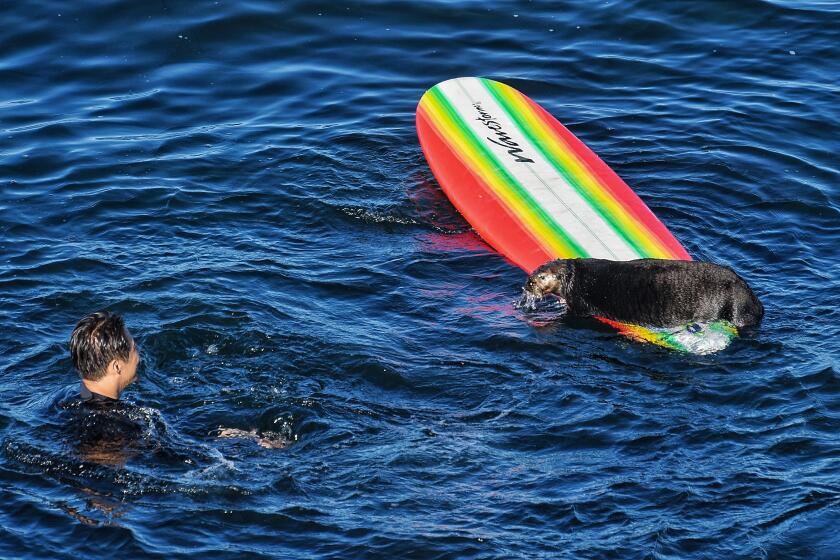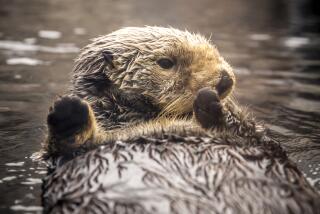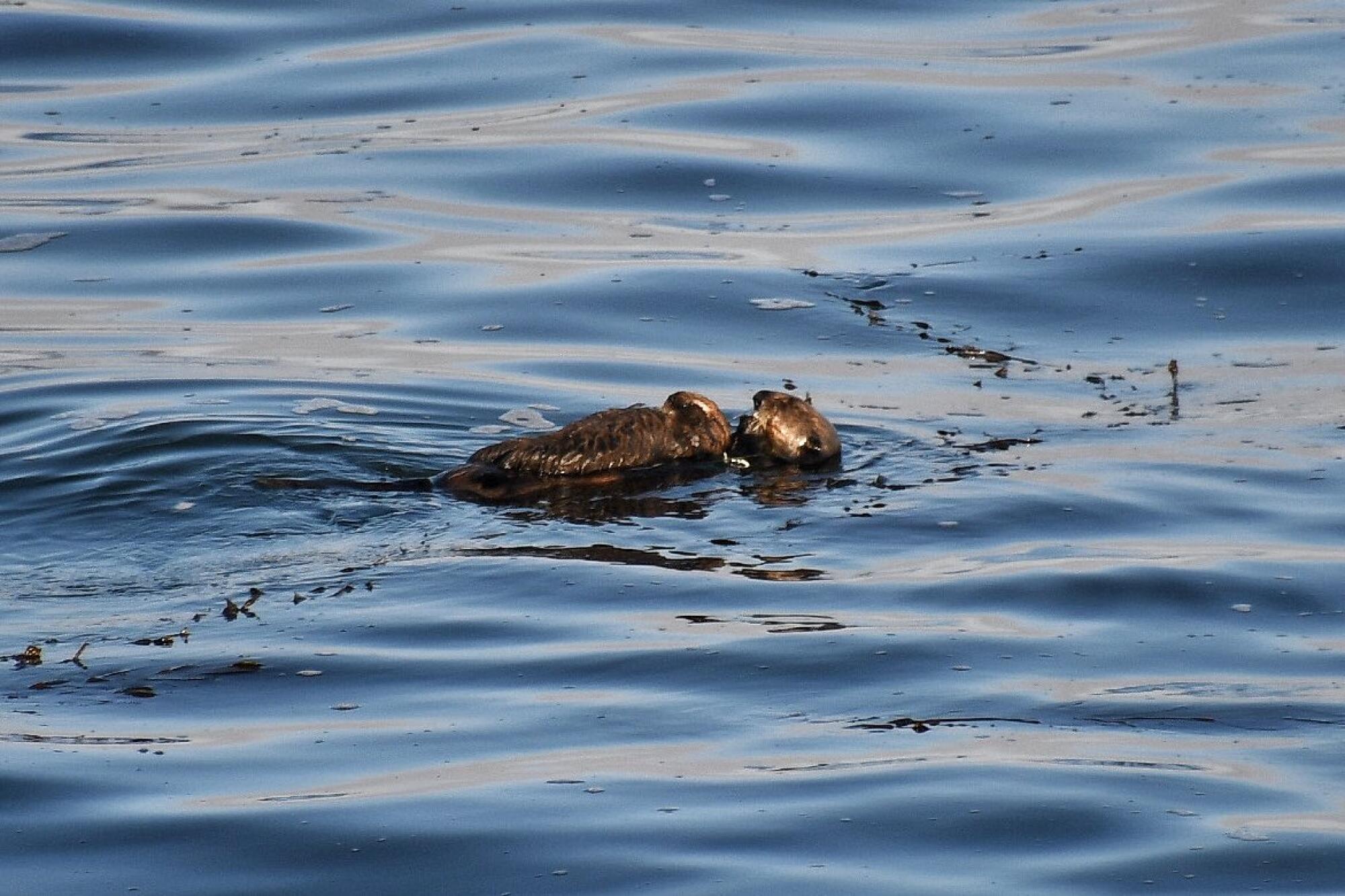
- Share via
SANTA CRUZ, Calif. — Sea otter 841 — the surfboard-biting-and-stealing mammal who became a national sensation this summer — has given birth to a fluffy pup.
On Wednesday afternoon, she was seen far off the Santa Cruz coast, rolling and spinning in the kelp and waves with a little otter pup on her belly.
Aggressive and impactful reporting on climate change, the environment, health and science.
Mark Woodward, her No. 1 fan and most dedicated chronicler, said he spotted the pup for the first time Tuesday afternoon.
“I couldn’t believe it,” he said. “I think I let out a yelp when I saw it.”
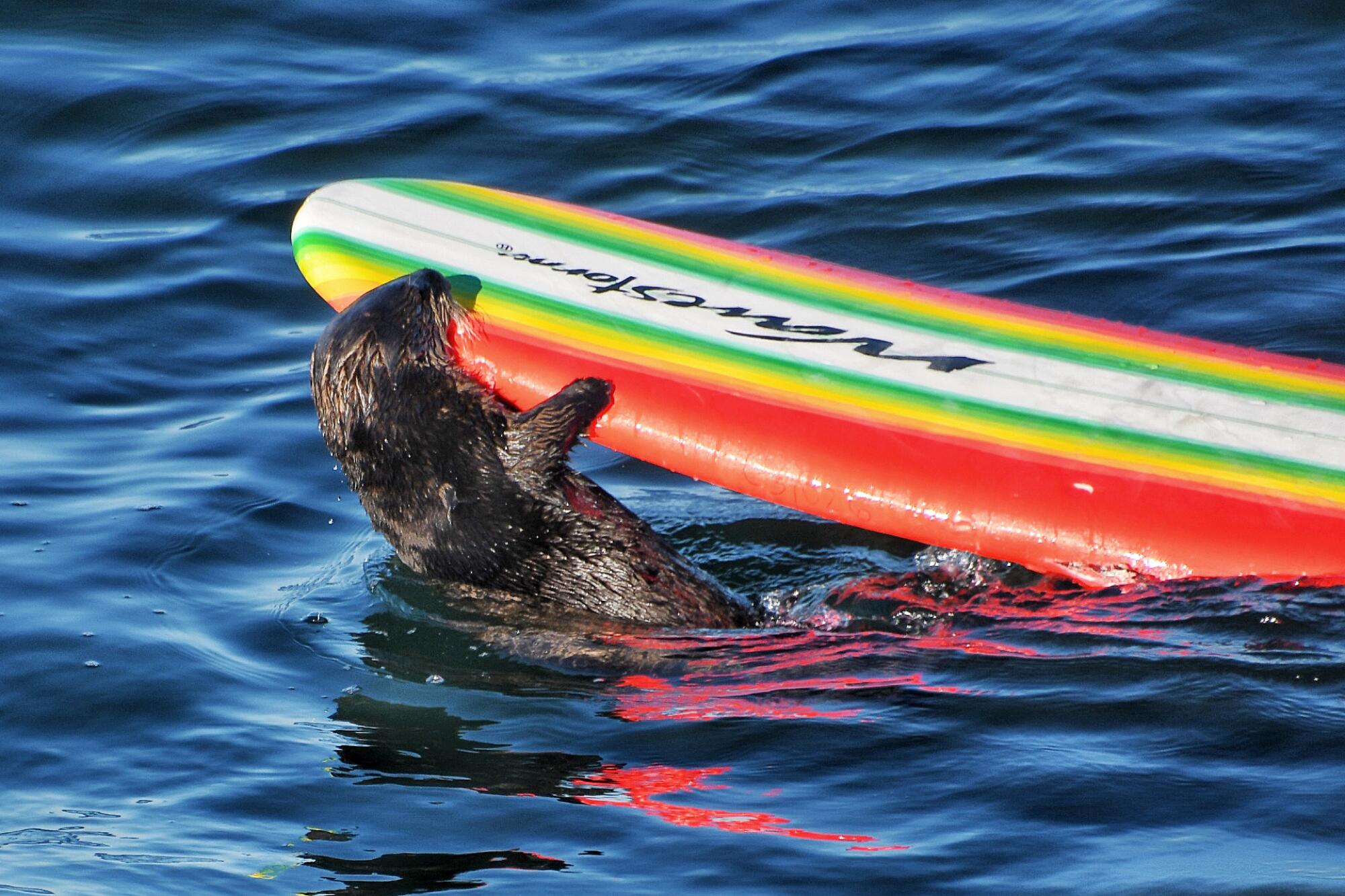
Woodward, a social media influencer who goes by the tag @NativeSantaCruz on Twitter, Instagram and Threads, said that as recently as Friday, 841 had been been swimming, lolling and feeding solo.
The pup’s birth, which has yet to be officially confirmed by state and federal wildlife authorities, may explain 841’s unusually aggressive behavior toward multiple surfers — at least one of whom abandoned their board and saw it carted off by the slick-haired cousin of the skunk and weasel. The gestational period for otters is roughly six months, and during this period, hormonal changes can cause the animal to become aggressive, experts say.
Emerson Brown, a spokesman for the Monterey Bay Aquarium, said he and the “aquarium team” could not comment on the situation.
An ornery, board-jacking sea otter is terrorizing surfers off the coast of Santa Cruz. An effort is underway to capture the creature.
He said they’d “seen tweets, like everyone, but can’t confirm anything based on those images. We are waiting on confirmation from the U.S. Fish and Wildlife Service.”
A spokeswoman for the federal agency said they were deploying someone to the area Thursday to confirm existence of the pup.
“While wildlife biologists suspected sea otter 841 may [have been] pregnant earlier this year, they were unable to verify the pregnancy without capturing the sea otter to perform a full health evaluation,” said Ashley McConnell, communications team leader in the Ventura Fish and Wildlife Office of the U.S. Fish and Wildlife Service.
“Hormonal surges related to pregnancy have been known to cause aggressive behavior in female southern sea otters. ... There are currently no plans to attempt capture.”
She’d given birth twice before. Her first pup survived; the second, born this spring, did not.
Gena Bentall, director and senior scientist with Sea Otter Savvy — a local research and environmental organization — said she and her group were “not participating in or supporting any media publicity around 841. We do not feel it is in her best interest.”
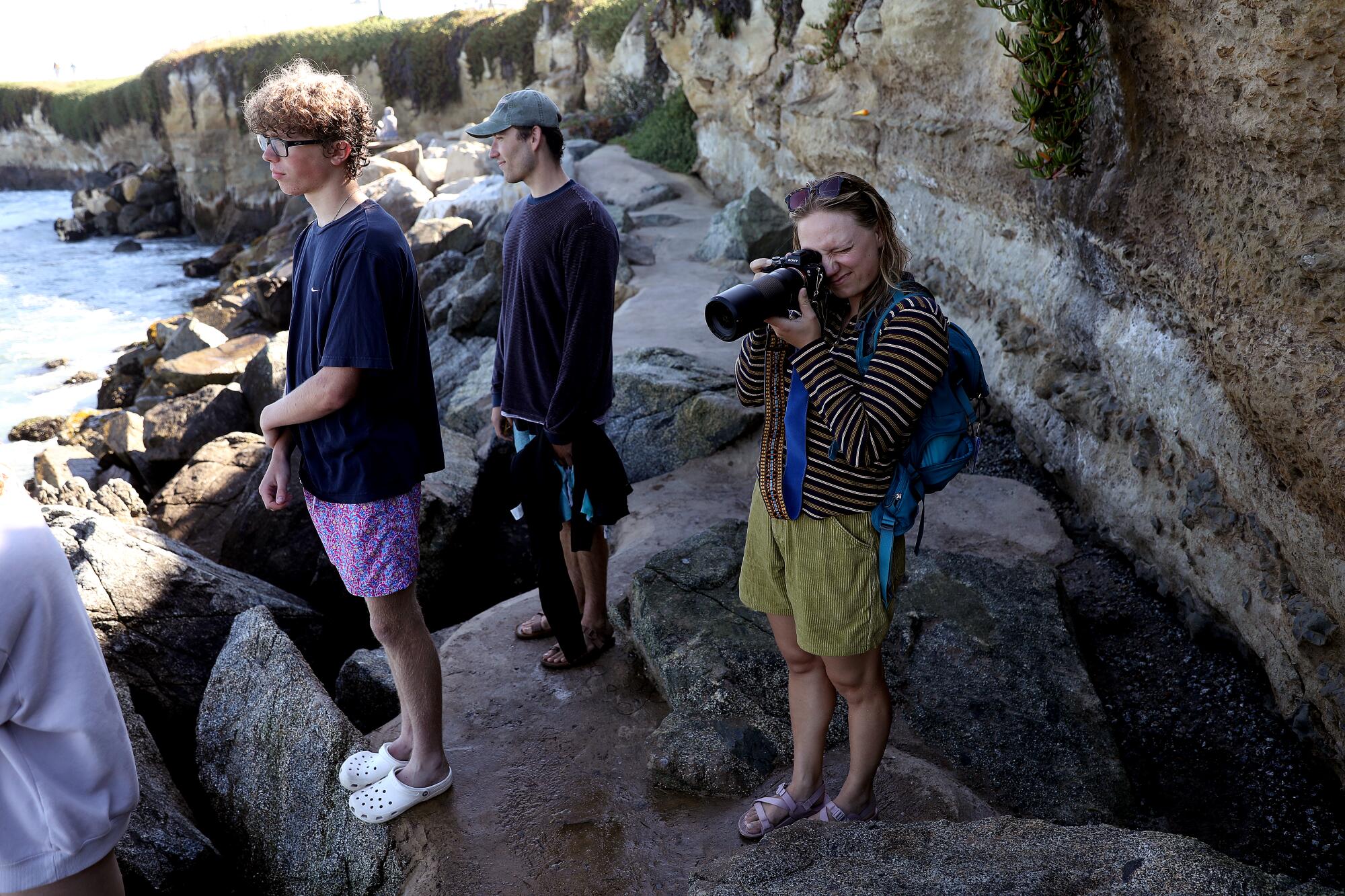
Woodward wasn’t surprised by Bentall’s response. After the media blitz this summer, he said, he saw several boaters and kayakers harassing the otter, getting too close and potentially stressing her out and threatening her safety.
“People need to know they should give her space,” Woodward said, citing federal regulations that require boats to keep a distance of 60 feet.
“To help give sea otters and their pups the best chance at survival in the wild, it’s important for members of the public to give them and their pups space, especially when recreating on the water,” said McConnell, noting that sea otters are protected by the Endangered Species Act, the Marine Mammal Protection Act and California state law.
She said a violation of these laws could result in penalties, including fines up to $100,000 and potential jail time of up to one year.
News of the pup — which was posted on the site formerly known as Twitter, by Woodward and Dustin Mulvaney, a professor of environmental studies at San Jose State University — was greeted with amazement by many.
As authorities extend their dragnet over land, sea and air, the renegade sea otter known as ‘841’ continues to evade capture while snacking on shellfish.
Zach Friend, a Santa Cruz County supervisor, said: “It’s beautiful to see the expansion of Team Otter. Hopefully she will be given the space she deserves to raise our newest, and already famous, Santa Cruz County resident.”
However, Joon Lee, an Apple software engineer from San Jose — whose board was attacked by 841 in July — said that although the news was “amazing,” he’d still want to make sure that she had stopped “attacking or getting on top of surfboards before I go out to the water.”
Last summer, after he’d been aggressively attacked, he developed a slight case of lutraphobia — a fear of otters — which squelched his desire to surf.
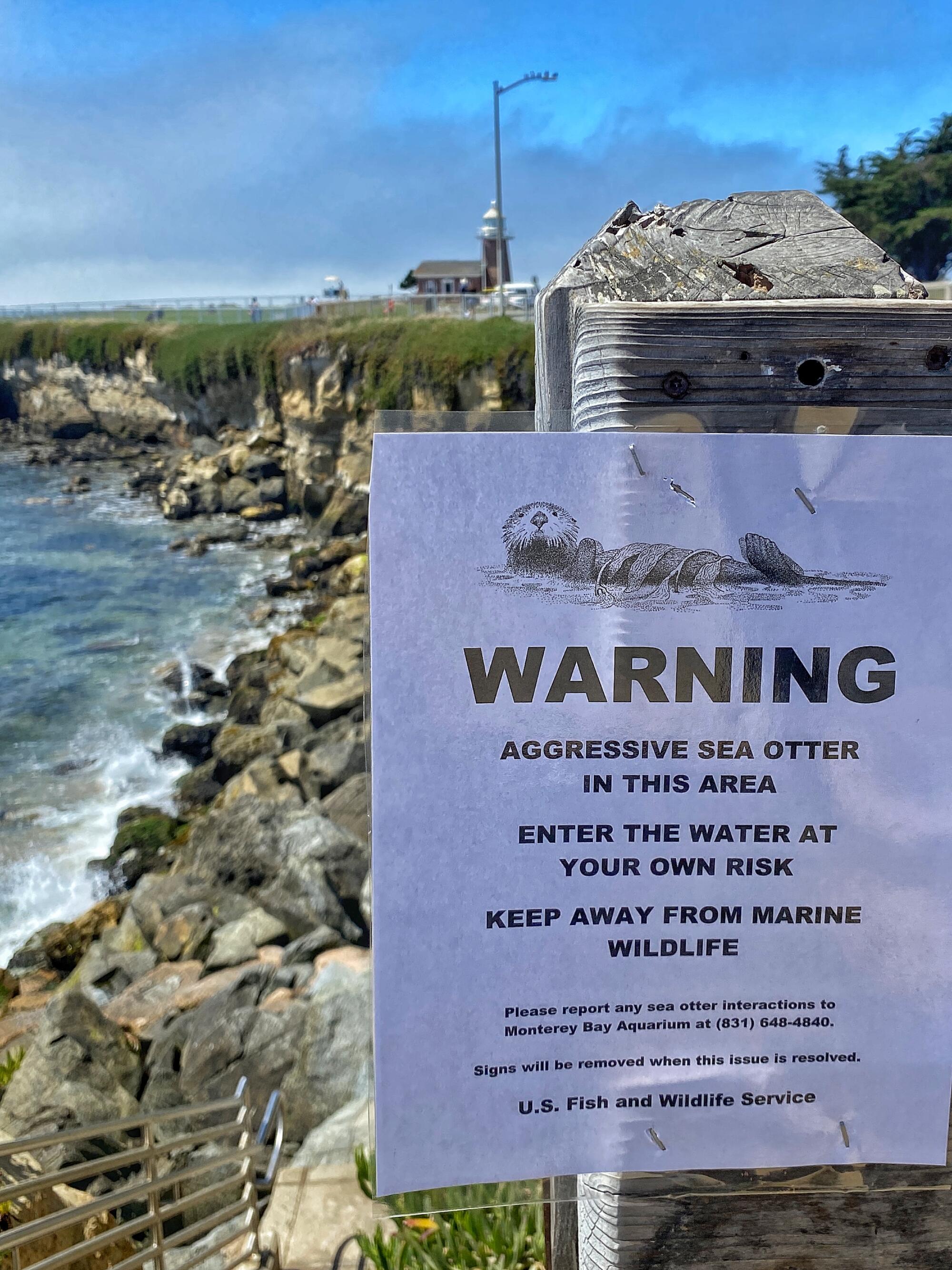
Woodward said he’s excited to watch 841 raise the little pup; since first spotting her in June, he’s become a local expert on sea otter behavior and biology — noting that sea otter moms have to leave their pups on the ocean’s surface when they dive to the bottom for shellfish and other meals.
“Feeding and caring for a pup requires significant energy reserves,” said Fish and Wildlife’s McConnell.
She said that unlike whales and seals, which have a thick layer of blubber, sea otters rely on their thick fur and super-high metabolic rate to stay warm. The average adult sea otter has to actively forage and eat 20% to 30% of its body mass in food each day just to meet its energy requirements.
“That’s why it’s incredibly important for sea otters to conserve their energy, and why they are often seen resting on their backs on the water’s surface when they are not foraging — their survival, and the survival of their pups, depends on it,” McConnell said.
Toward a more sustainable California
Get Boiling Point, our newsletter exploring climate change, energy and the environment, and become part of the conversation — and the solution.
You may occasionally receive promotional content from the Los Angeles Times.

